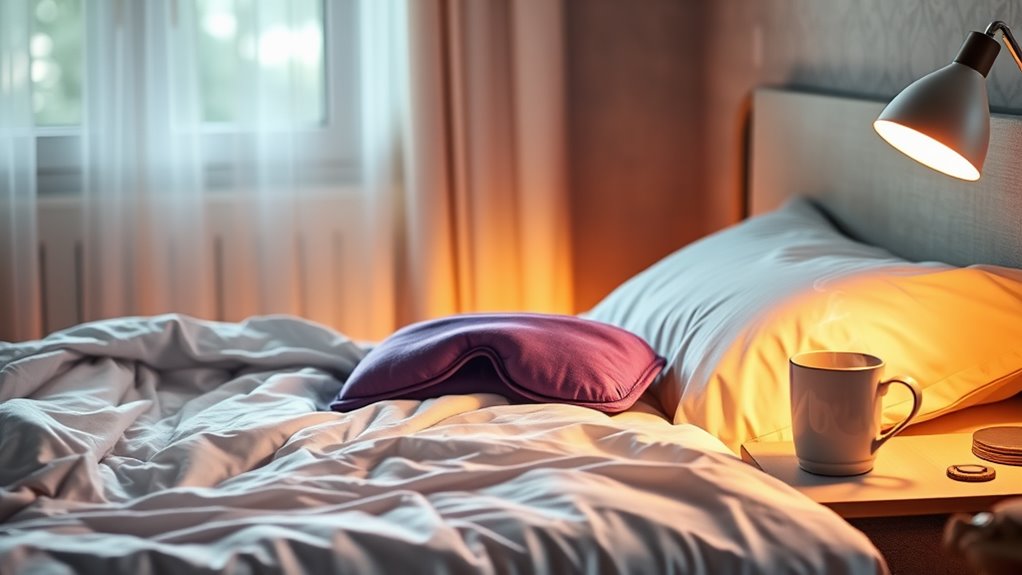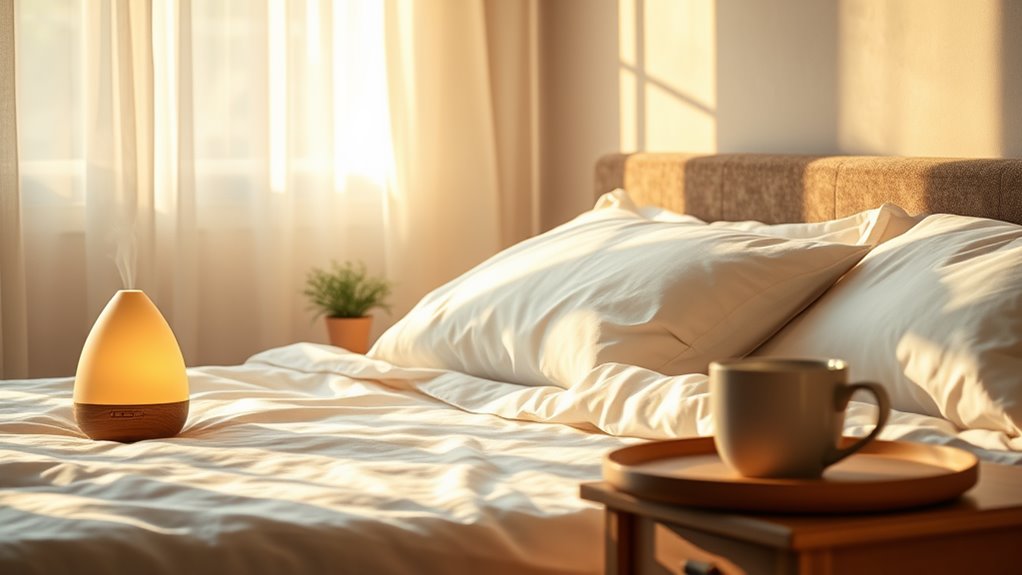Fall Asleep in 5 Minutes – Military Sleep Technique for Civilians
The Military Sleep Technique helps you fall asleep in just five minutes by combining relaxation with mental focus. Start by finding a comfortable position in a quiet space. Relax your facial muscles, breathe deeply, and release tension from your shoulders. Visualize a calming scene for ten seconds, gently redirecting your thoughts if they wander. This method can be adapted to any environment, enhancing your sleep quality. Explore how to integrate it into your routine for even better results.
Understanding the Military Sleep Technique
The Military Sleep Technique is a proven method designed to help individuals fall asleep quickly, even in less-than-ideal conditions.
This technique combines relaxation techniques and mental focus, making it one of the most effective natural quick sleep methods available.
Step-by-Step Guide to the Technique
To effectively practice the Military Sleep Technique, start by finding a quiet space where you can comfortably recline.
Close your eyes and relax your facial muscles, focusing on your breathing.
Then, release tension in your shoulders and arms.
Visualize a calming scene for ten seconds.
If your mind wanders, gently guide it back.
With practice, you’ll find it easier to fall asleep quickly.
Benefits of the Military Sleep Technique
Mastering the Military Sleep Technique offers numerous benefits that extend beyond just falling asleep faster.
You’ll experience:
- Increased relaxation, enabling a deeper sleep.
- Enhanced focus and productivity during the day.
- Improved emotional well-being through better sleep quality.
Common Challenges and How to Overcome Them
While the Military Sleep Technique can significantly enhance your sleep quality, it’s not without its challenges.
You might struggle with an overactive mind or physical discomfort. To overcome these, practice deep breathing or progressive muscle relaxation to calm your mind and body. Additionally, maintaining consistent practice can help train your mind to respond effectively, improving your ability to fall asleep quickly. Incorporating breathing techniques into your routine can also help alleviate anxiety, making it easier for you to transition into sleep.
Tips for Creating the Ideal Sleep Environment
Creating the ideal sleep environment is crucial for achieving restful and quick sleep.
Follow these tips to enhance your sleep space:
-
Control the temperature: Keep your room cool, ideally between 60-67°F (15-19°C).
-
Minimize noise: Use earplugs or white noise machines to block disturbances.
-
Limit light: Install blackout curtains or use sleep masks to create darkness.
Implement these strategies for a better night’s sleep.
Integrating the Technique Into Your Routine
To effectively integrate the technique into your routine, start with a step-by-step practice that allows you to master each element.
Pair this with a consistent sleep schedule to reinforce your body’s natural rhythms.
Sticking to these practices will enhance your ability to fall asleep in just five minutes.
Step-by-Step Practice
Integrating the technique of falling asleep in just five minutes into your nightly routine can significantly enhance your sleep quality.
Follow these steps to practice effectively:
-
Find a quiet space: Minimize distractions for a calm environment.
-
Visualize relaxation: Focus on calming imagery or breathing exercises.
-
Consistently practice: Make this technique a nightly habit to master it.
Your journey to better sleep starts now!
Consistent Sleep Schedule
Establishing a consistent sleep schedule lays the groundwork for your newfound technique to work effectively. Aim to go to bed and wake up at the same time daily, even on weekends.
This practice reinforces your body’s internal clock, making it easier to calm your mind and fall asleep in five minutes.
Over time, you’ll notice improved sleep quality and overall well-being.
Additional Methods for Improving Sleep Quality
To enhance your sleep quality, start by optimizing your sleep environment, ensuring it’s dark, quiet, and cool.
Incorporating relaxation techniques like deep breathing or meditation can also help calm your mind before bed. Additionally, sipping on herbal teas such as chamomile tea can further promote relaxation and improve your sleep experience.
Lastly, maintaining a consistent sleep schedule reinforces your body’s internal clock, making it easier to fall asleep and wake up refreshed.
Sleep Environment Optimization
While many factors affect sleep quality, optimizing your sleep environment can have an immediate impact on how quickly you fall asleep and stay asleep.
Consider these three elements:
-
Temperature: Keep your room cool, ideally between 60-67°F (15-19°C).
-
Noise: Use white noise or earplugs to block distractions.
-
Lighting: Dim or eliminate light to promote melatonin production.
These adjustments can significantly enhance your sleep experience.
Relaxation Techniques Overview
When it comes to falling asleep quickly, integrating relaxation techniques into your nightly routine can make a significant difference.
You can try deep breathing exercises, progressive muscle relaxation, or guided imagery to ease tension and calm your mind.
Incorporating mindfulness meditation can also enhance your ability to unwind.
Sleep Schedule Consistency
Establishing a consistent sleep schedule is crucial for optimizing your sleep quality, as it helps regulate your body’s internal clock.
To improve your sleep routine, consider the following:
- Go to bed and wake up at the same time every day.
- Avoid naps longer than 20 minutes.
- Limit screen time an hour before bedtime.
These habits can significantly enhance your overall restfulness.





